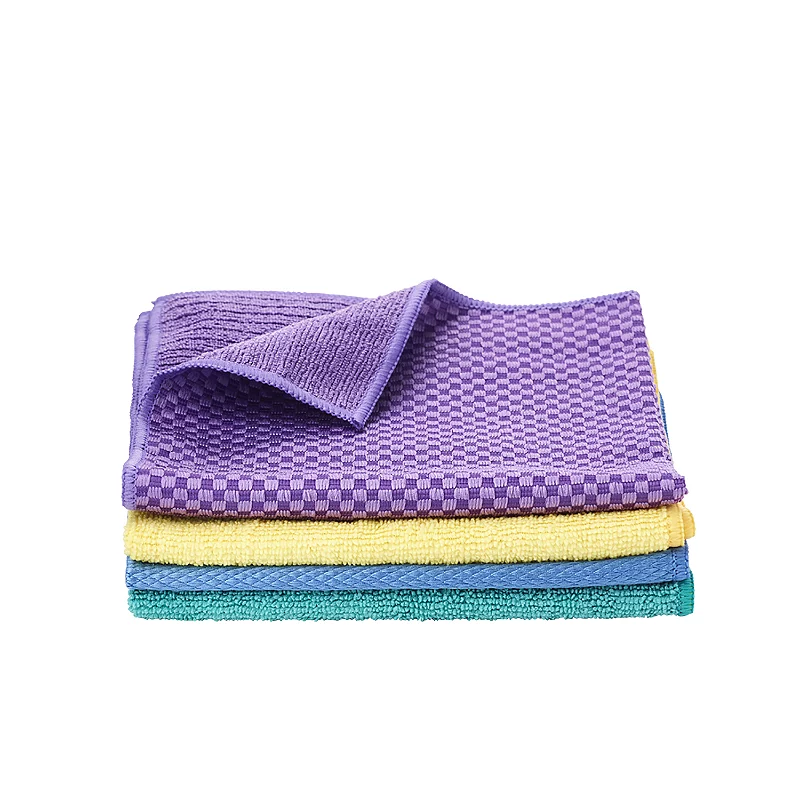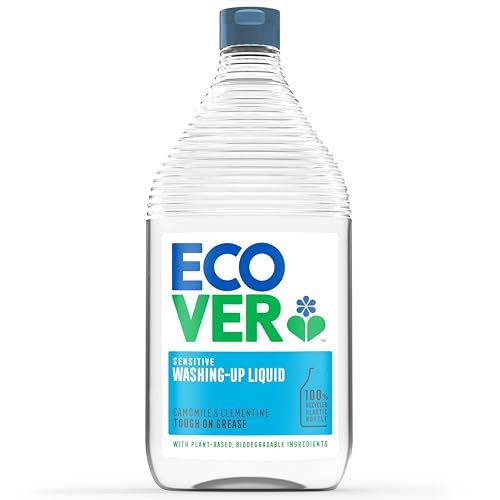How to clean matt kitchen cupboards – this is how the experts tackle fingerprints, streaks and dust
Top tips to keep your matt kitchen cupboards looking chic
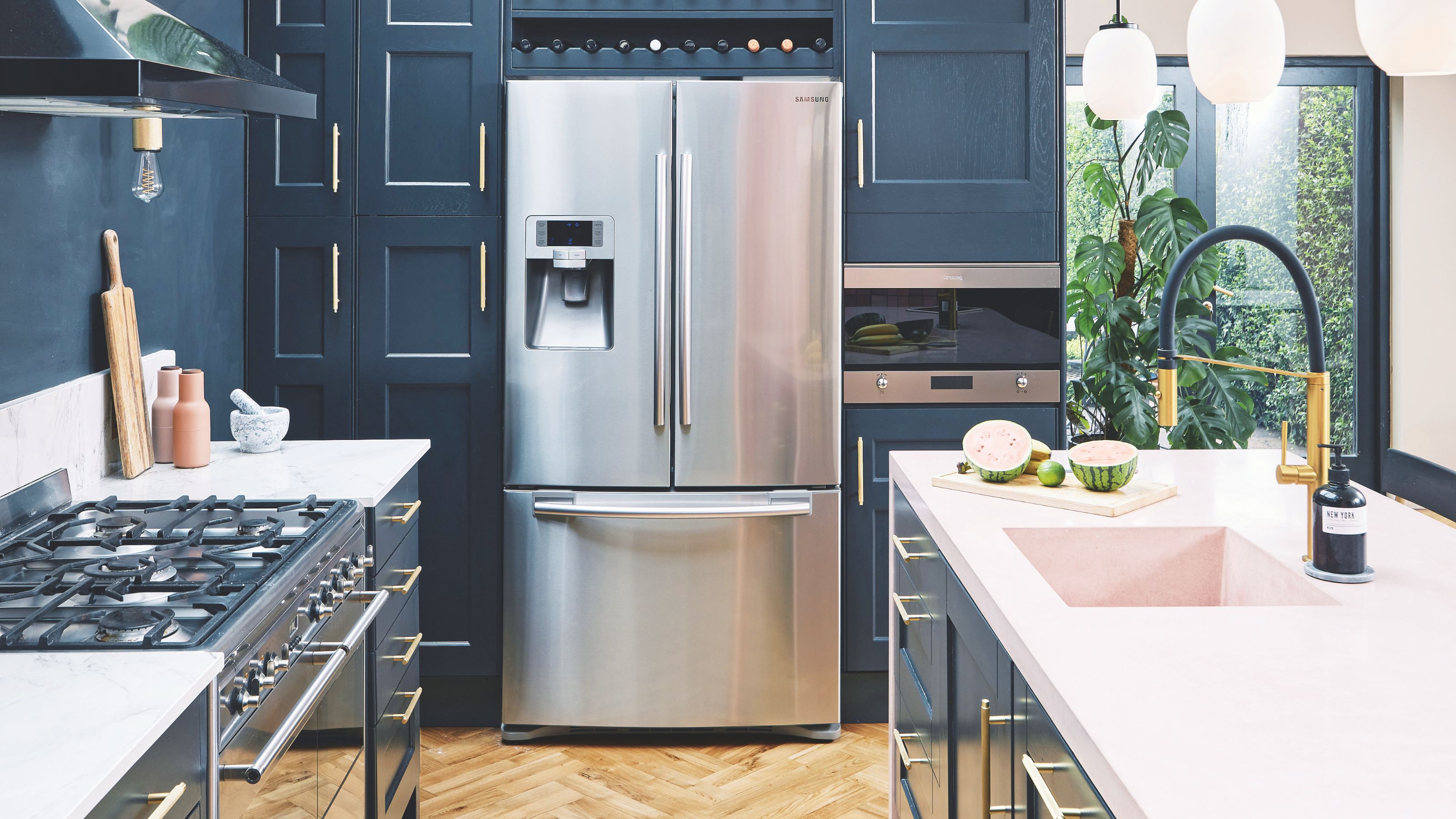

Our kitchens can go through quite a lot from day to day. From steam to stains, grease and oil, it sees it all as you prepare and whip up your favourite dishes. If you have splashed out on your dream matt kitchen cupboards, you'll know fingerprints and streaks can ruin their rich velvety look. That's why we've asked the experts how to clean matt kitchen cupboards to keep your kitchen cabinet ideas looking as chic as the day you bought them.
‘Matt finishes are ideal for anyone looking for a low-maintenance, easy-to-live-with kitchen style,’ says Symphony's Design Manager, Josie Medved. ‘Their elegant and understated look includes a colour consistency that retains its solidity and depth whatever the light, wherever it’s installed and at all times of the day.’
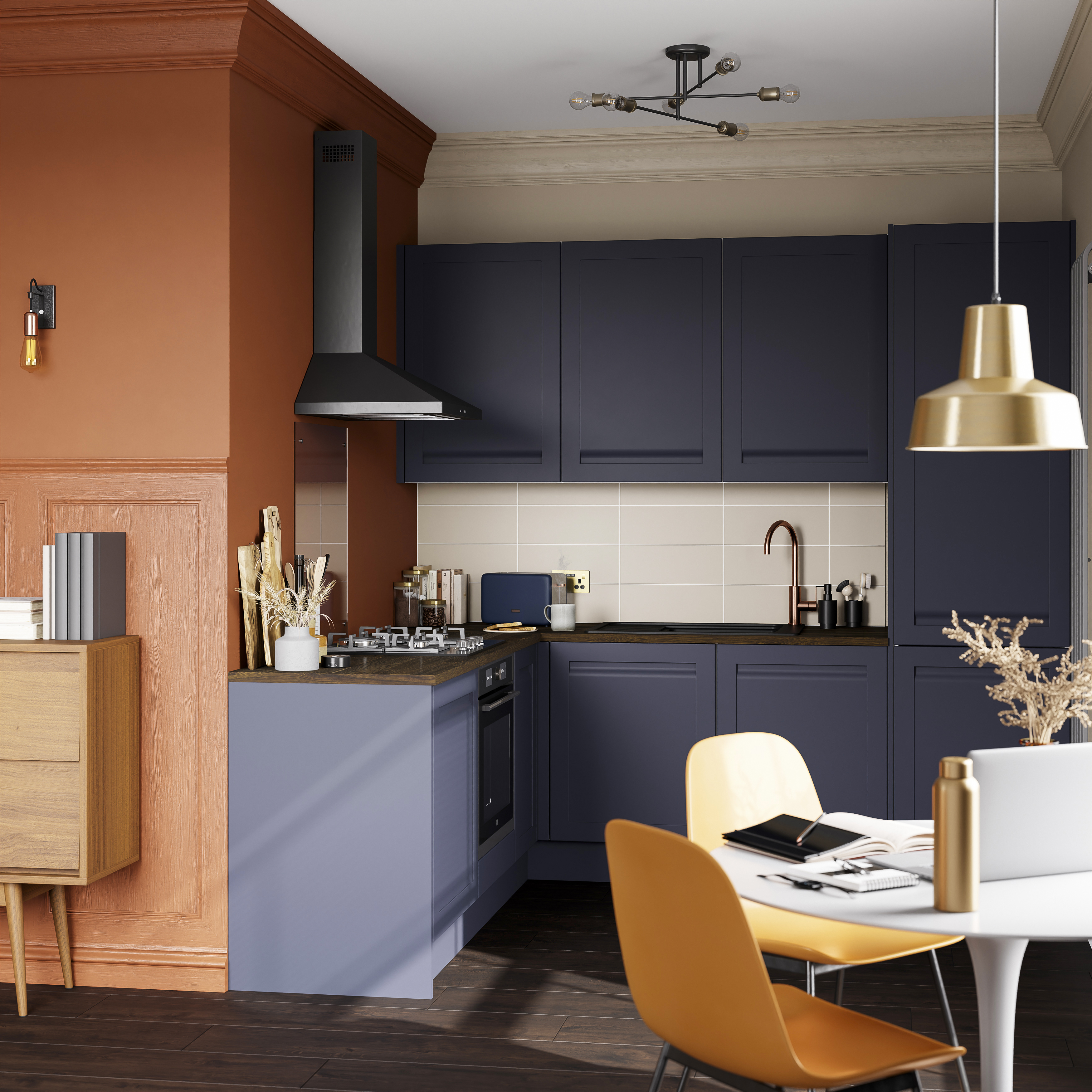
While matt cabinets are not hard to clean, ‘unlike gloss surfaces, they don’t reflect light which makes any marks harder to see. This can mean the dirt can go unnoticed until it is more ingrained in the surface of the cabinet,’ admits MyJobQuote.co.uk's Cleaning Expert, Sarah Dempsey.
So, here’s everything you need to know about how to clean matt kitchen cupboards, as well as a handy step-by-step guide to make cleaning them an absolute breeze.
What you'll need
Step-by-step guide
1. Prepare your cleaning solution
Depending on your preference, you can buy a cleaning solution designed specifically for cleaning matt surfaces, like kitchen cupboards. Or, the experts all agree adding a few drops of washing-up liquid to a bowl of warm water and giving it a mix should more than suffice.
Just ‘remember less is more when it comes to matt surfaces,’ Catherine Green, from smol, affirms. ‘You only need a small drop of dish soap to avoid leaving residue behind.’
2. Remove any dust or debris
Before you get started, it’s important to gently give your matt kitchen cupboards a wipe with a dry microfibre cloth to remove any dust or loose debris, as ‘this will prevent scratching when you move on to wet cleaning,’ Catherine admits.
This is ‘because dust and other fine grains left over from earlier cleaning can act like sandpaper and are a risk to any surface, no matter how well-sealed it is,’ reveals Nadine Chadwick, Head of Marketing at Nolte Kitchens. It’s also important to only use microfibre cloths when cleaning matt kitchen cupboards as regular cloths or paper towels can leave lint and streaks behind, the experts concur.
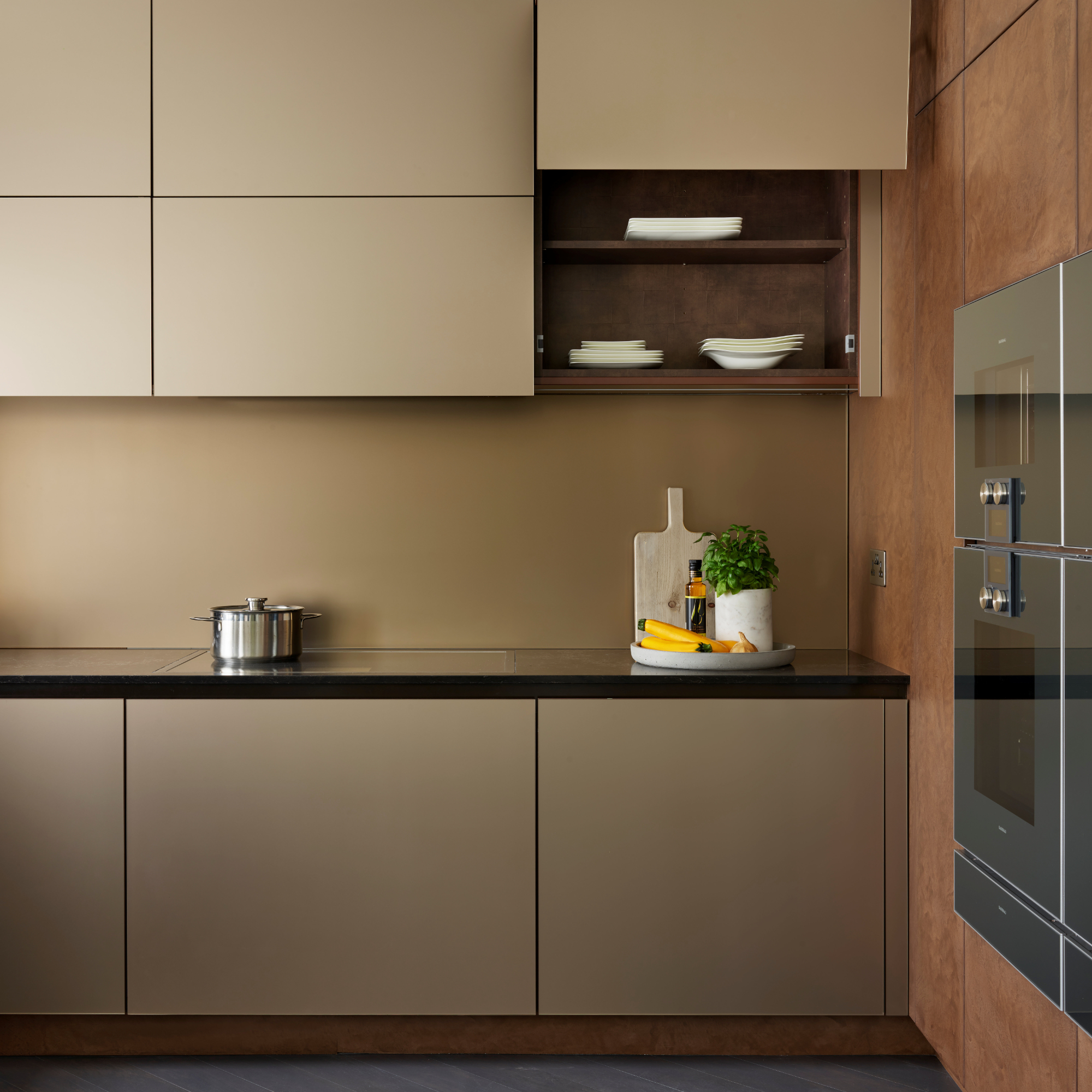
3. Start cleaning
Once you’ve removed all of the dust, it’s time to dampen a second microfibre cloth – not the one you just used to remove any dust and debris. But it is incredibly important that you wring it out well. Essentially, ‘the cloth should feel barely damp to touch,’ according to Catherine. This is because you don’t want ‘moisture to enter the bar handles or edges, causing the wood to swell,’ Nadine warns.
Once your cloth is damp but not wet, work in small sections, using gentle circular motions – rather than up-and-down or side-to-side wiping – to clean the entirety of each door, paying extra attention to handles and edges where grease tends to build up.
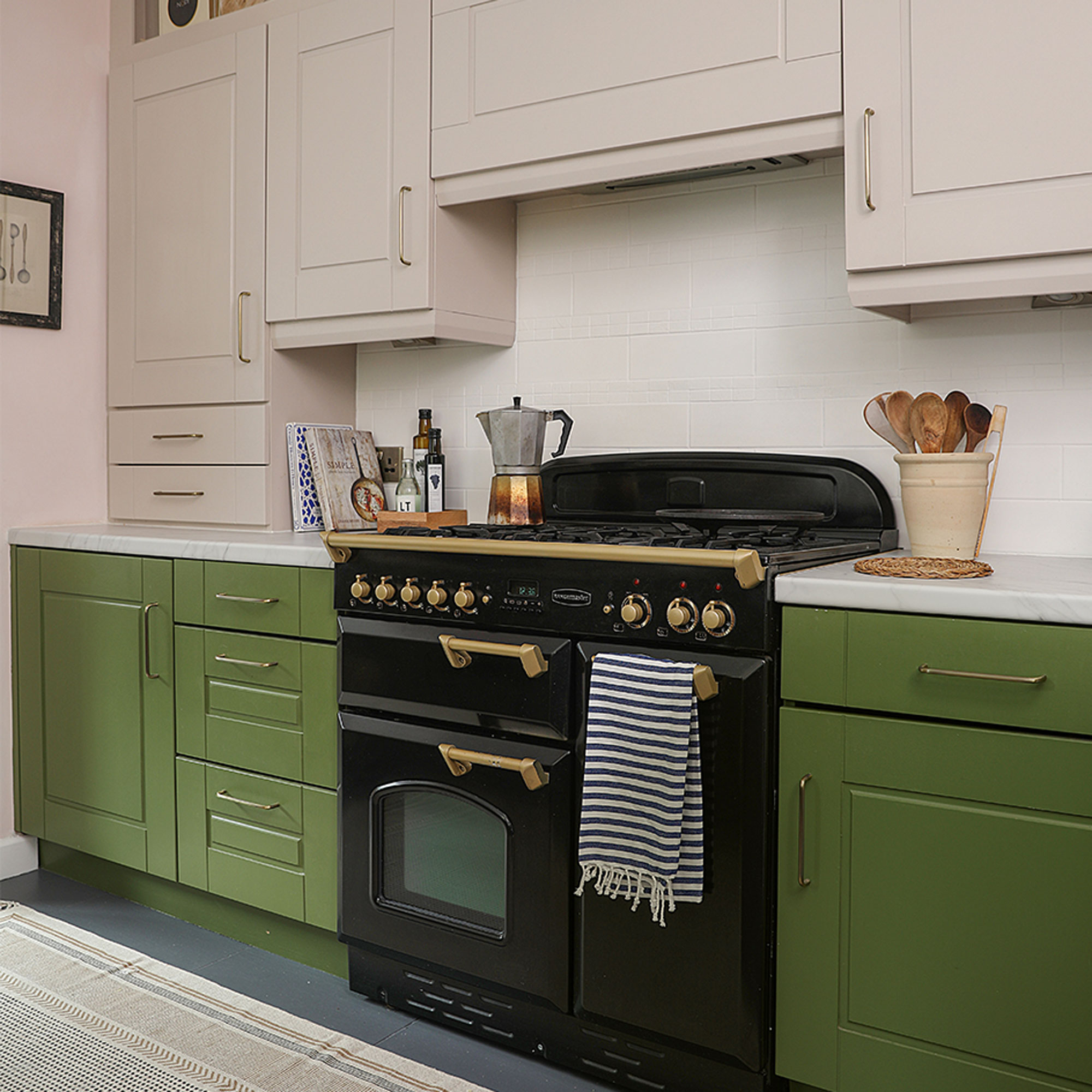
4. Rinse
It’s time to take another microfibre cloth – see, that’s why we recommend picking up a pack of at least four for cleaning jobs such as this – but this time you only want to dampen it with water. And this will allow you to wipe each section to remove any soap residue.
Just ‘remember to rinse your cloth frequently to ensure a streak-free finish,’ Catherine advises.
5. Finish by drying thoroughly
With a fourth and final microfibre cloth, this one should be completely dry as it will be used to dry each and every cabinet door, making sure that no moisture remains. Much like when you were cleaning, you’ll want to dry in small, gentle circular motions to buff the surface. And according to Catherine, ‘this step is crucial for preventing water marks and streaks.’
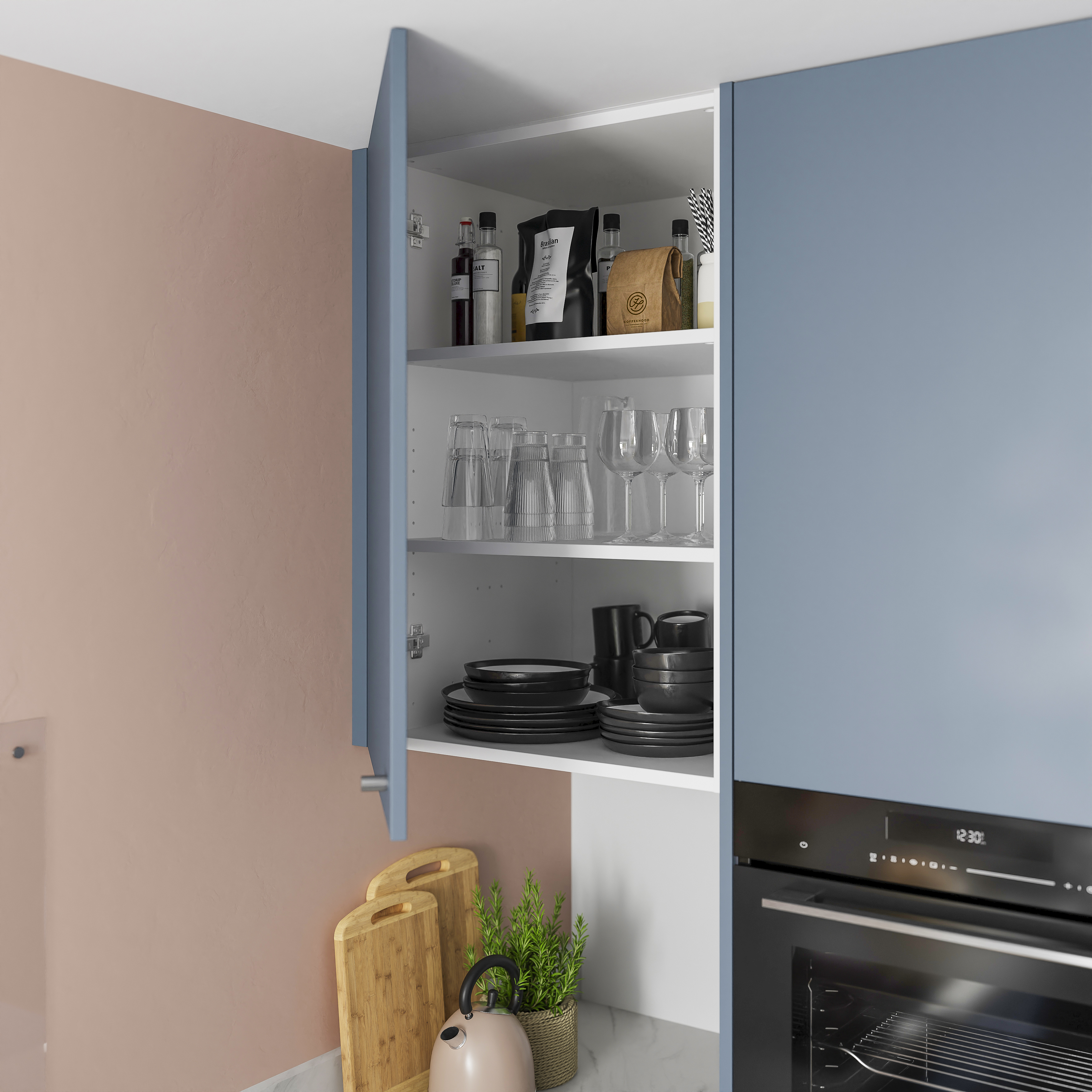
FAQs
How do you get fingerprints off matt kitchen cabinets?
‘Fingerprints can show up on matt kitchen cabinets due to the oil in our skin which leaves a residue behind on the surface,’ Sarah explains. So, ‘if washing up liquid and water doesn’t remove the marks, it’s time to use a solution of white vinegar and water.’
Cleaning with vinegar works because ‘vinegar is a natural acid and it will cut through the greasy fingerprints without damaging the surface of the cabinet,’ Sarah continues. You’ll want to create ‘a solution of equal parts white vinegar and water,’ Catherine adds. But you should always test on a small, hidden area first, before applying it all over.
In most cases, if the fingerprints are fresh, you should be able to wipe these away with a slightly damp microfibre cloth. However, ‘for particularly stubborn marks, you can rub a paste of bicarbonate of soda and water on the surface until the surface is clean,’ Sarah proposes.
While you should never use any abrasive cleaning materials on matt surfaces, as they can leave scratches, this bicarb solution is much more delicate. Don’t forget to rinse it off with some clean water and dry well with a new cloth afterward but that should help to break down any tougher dirt or grease.
How do you keep matt cabinets clean?
As with most things, keeping on top of the cleaning will save you from having to do an especially deep clean. And the best way to keep matt cabinets clean is to get into a good routine of wiping them down regularly and thus preventing the buildup of dirt, grease or stains. Make this a part of your daily cleaning routine, or even part of your Sunday reset.
‘A regular quick wipe with a clean, slightly damp microfibre cloth can prevent the build-up of grease and grime,’ Catherine suggests. ‘Make it a habit to wipe down cabinet fronts once a week, paying special attention to areas around handles and edges where fingers naturally touch. And always use gentle, circular motions and avoid harsh chemicals or abrasive cleaners which can damage the matt finish.’
Get the Ideal Home Newsletter
Sign up to our newsletter for style and decor inspiration, house makeovers, project advice and more.

Ellis Cochrane has been a Freelance Contributor for Ideal Home since 2023. Ellis has been writing about homes, interiors and gardens for four years now, with her also contributing to House Beautiful, Country Living, Expert Reviews, Real Homes and Stylist.
-
 Zoe Ball's colourful kitchen island shows how easy it is to create a characterful cooking space - here's how she did it
Zoe Ball's colourful kitchen island shows how easy it is to create a characterful cooking space - here's how she did itBeing brave with colour will reap huge rewards
By Holly Cockburn
-
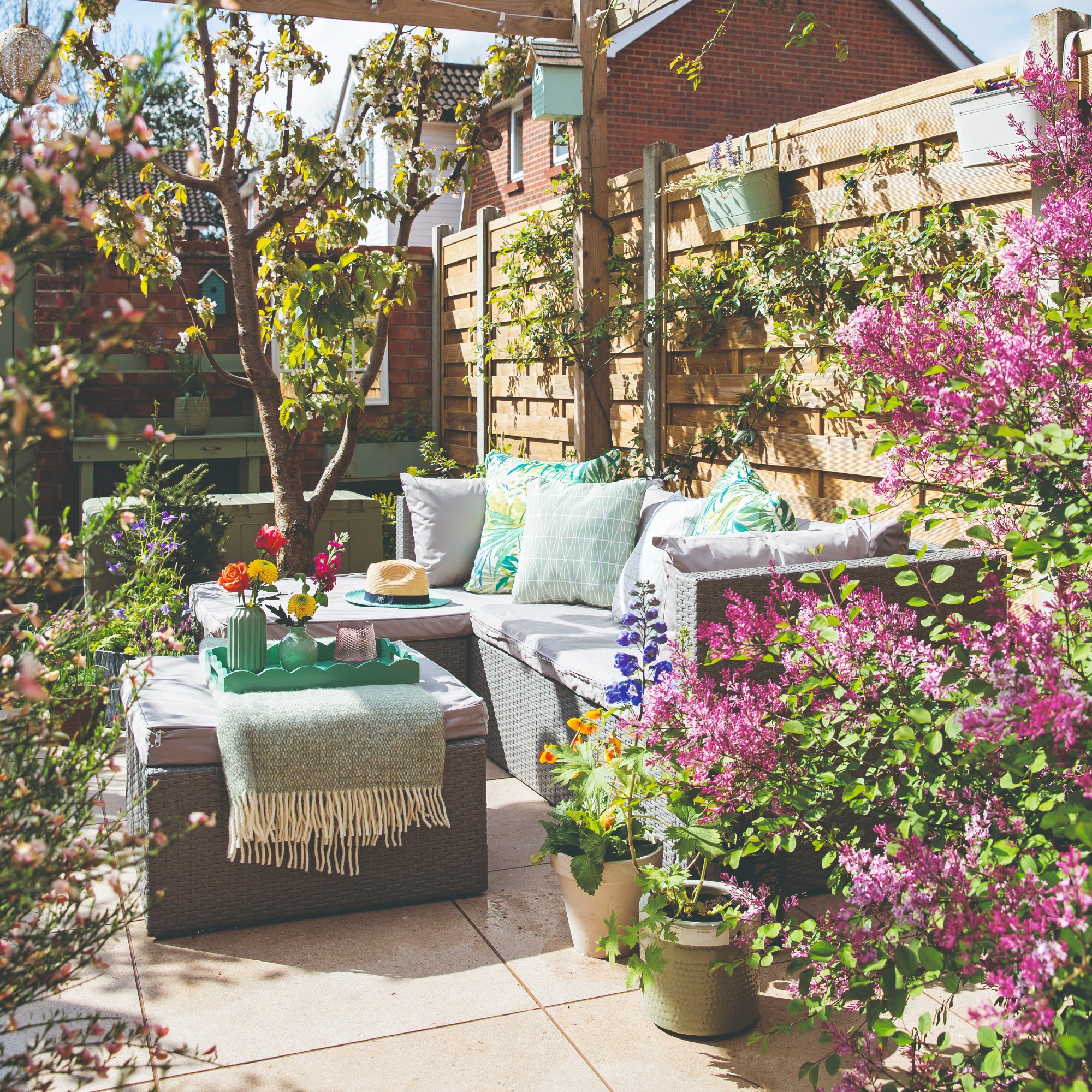 7 plants that will make your patio smell gorgeous - the top fragrant picks experts recommend potting up
7 plants that will make your patio smell gorgeous - the top fragrant picks experts recommend potting upFrom aromatic flowers to fragrant herbs
By Kayleigh Dray
-
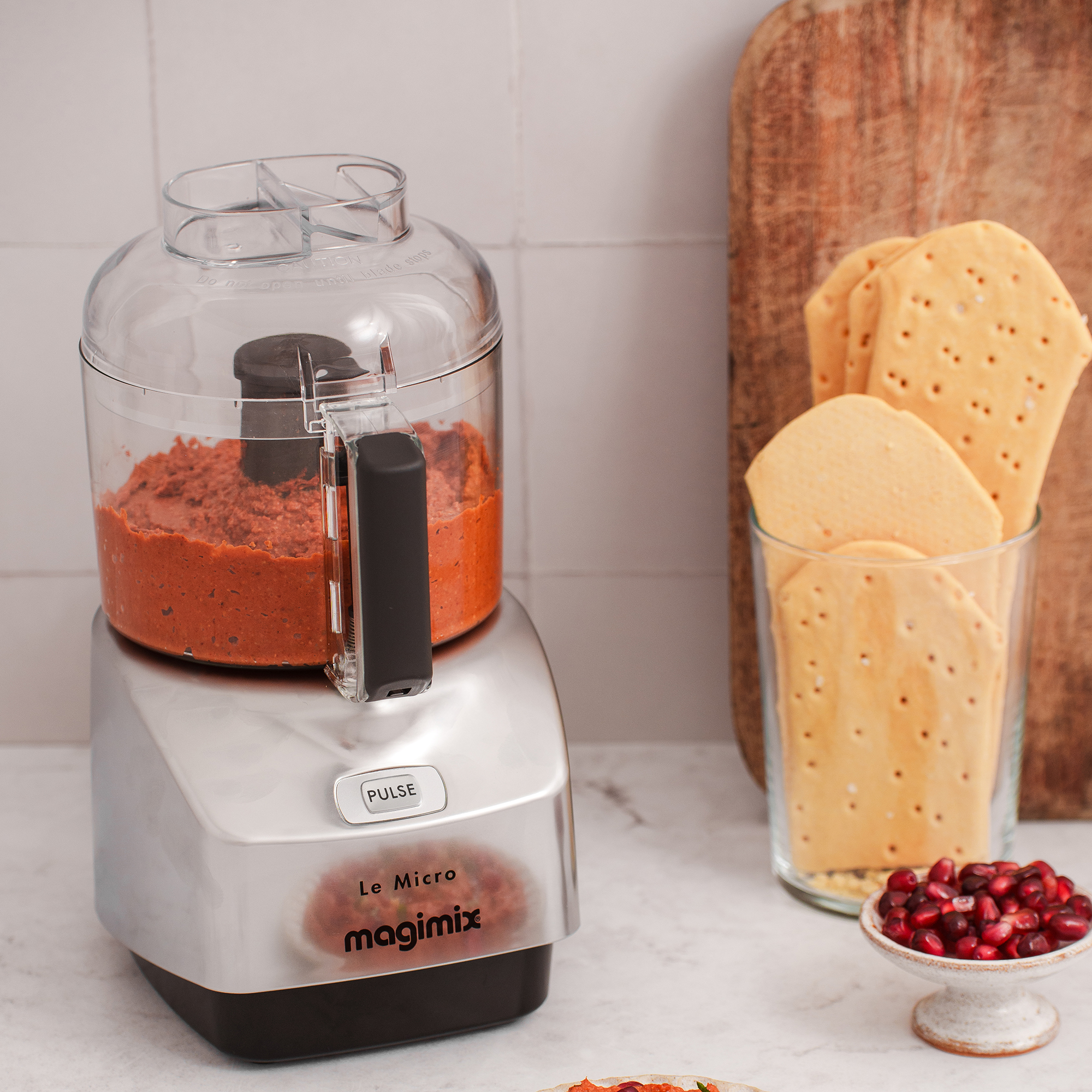 I won't gatekeep - Magimix's new small kitchen-friendly mini chopper is my secret to delicious lazy dinners
I won't gatekeep - Magimix's new small kitchen-friendly mini chopper is my secret to delicious lazy dinnersMy homemade pesto pasta has never been better
By Holly Cockburn
-
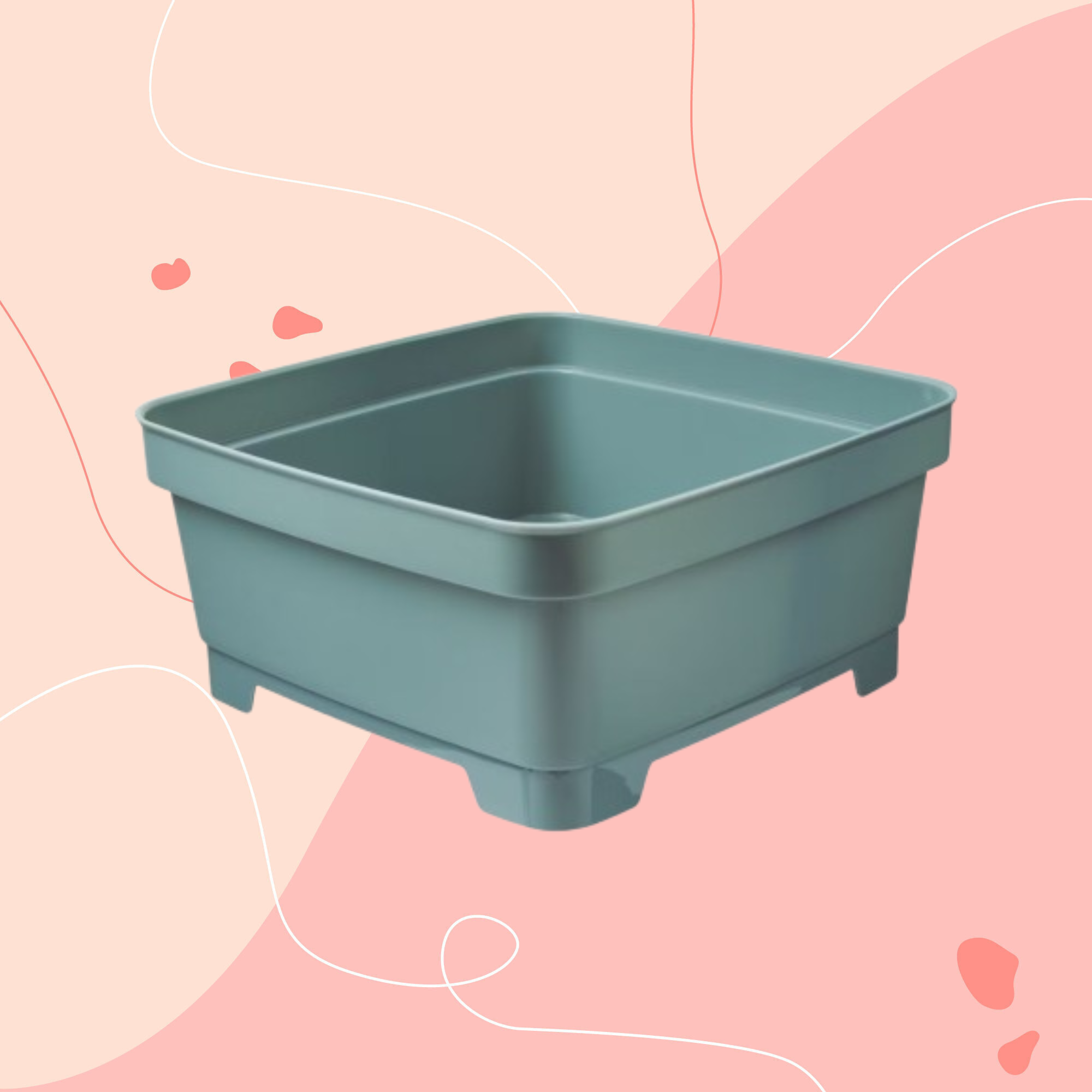 Aldi is releasing a budget alternative to the cult Joseph Joseph washing up bowl – it’s just £4.99
Aldi is releasing a budget alternative to the cult Joseph Joseph washing up bowl – it’s just £4.99The Joseph Joseph washing up bowl is an Ideal Home favourite - now we can't wait to try Aldi's alternative
By Kezia Reynolds
-
 I just bought my first home, and this £10 buy was the very first thing I bought for it to make it feel warmer and secure
I just bought my first home, and this £10 buy was the very first thing I bought for it to make it feel warmer and secureIf I did it all again, this would still be my very first buy
By Rebecca Knight
-
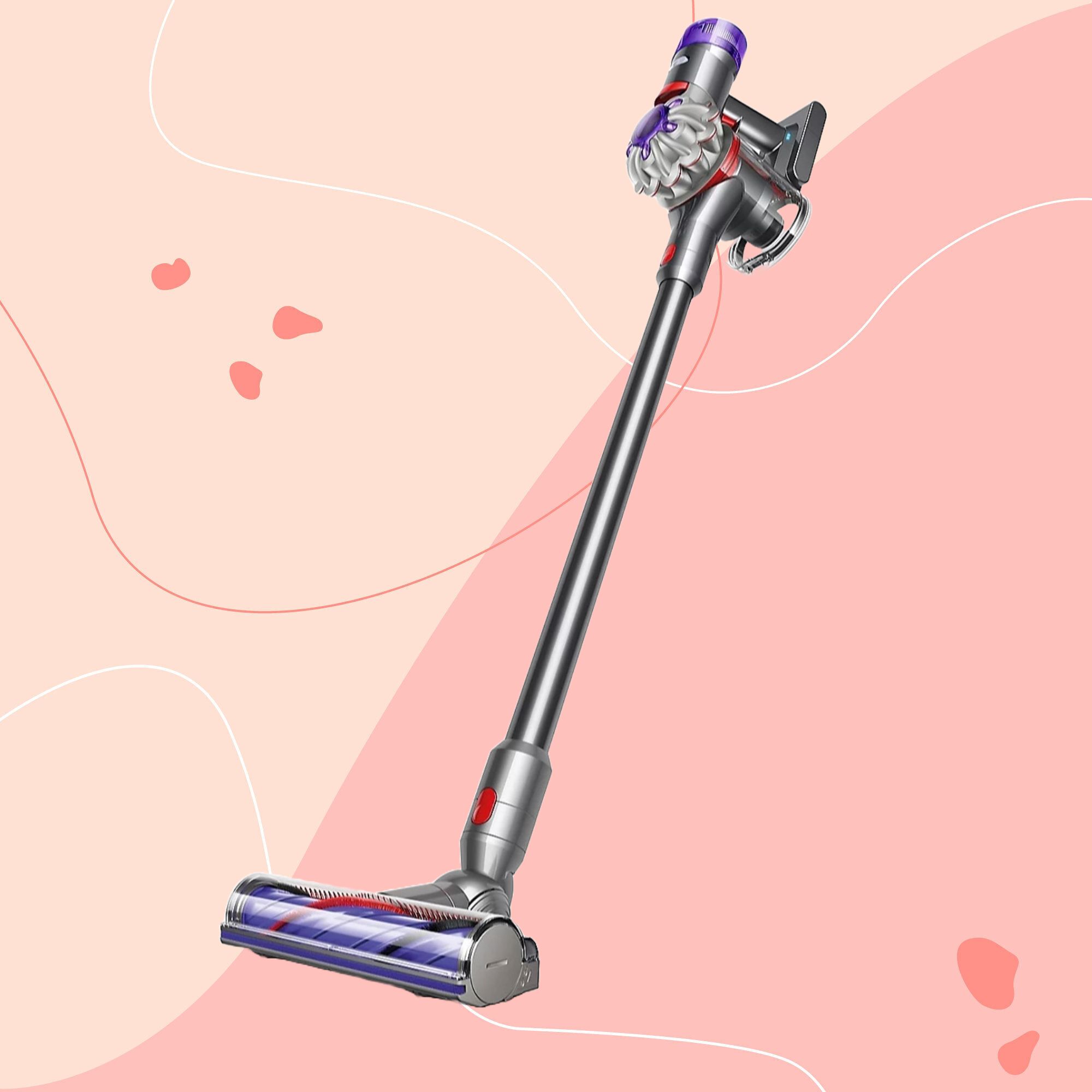 It’s normally impossible to find a Dyson vacuum for under £250 — but QVC has slashed the price of their bestselling models for a limited time
It’s normally impossible to find a Dyson vacuum for under £250 — but QVC has slashed the price of their bestselling models for a limited timeRun don’t walk to pick up the brand’s bestselling model for under £230 before it sells out
By Lauren Bradbury
-
 Catherine Zeta-Jones has revealed the cleaning product she swears by to keep her home fresh - and it’s just £8 on Amazon
Catherine Zeta-Jones has revealed the cleaning product she swears by to keep her home fresh - and it’s just £8 on Amazon'I use it on my counters. I use it on my walls. I use it on my doors. When I smell it, I know my house is clean.'
By Kezia Reynolds
-
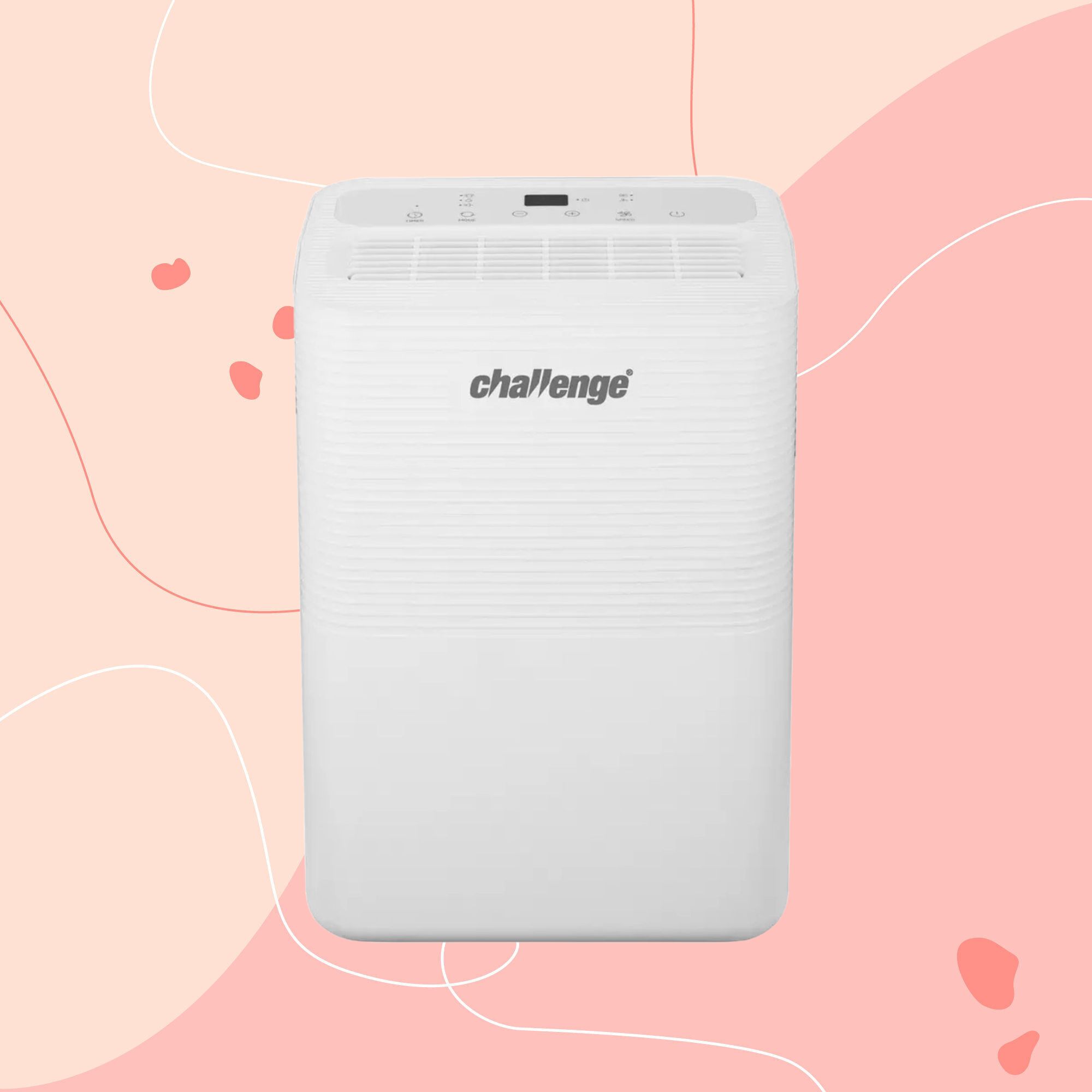 I tested the 12L Challenge dehumidifier in my damp Victorian home over winter — I haven’t spotted any signs of mould for the first time in five years
I tested the 12L Challenge dehumidifier in my damp Victorian home over winter — I haven’t spotted any signs of mould for the first time in five yearsThe Challenge 12L dehumidifier doesn’t have too many bells and whistles, but I can already see the difference it’s made to my damp home
By Lauren Bradbury
-
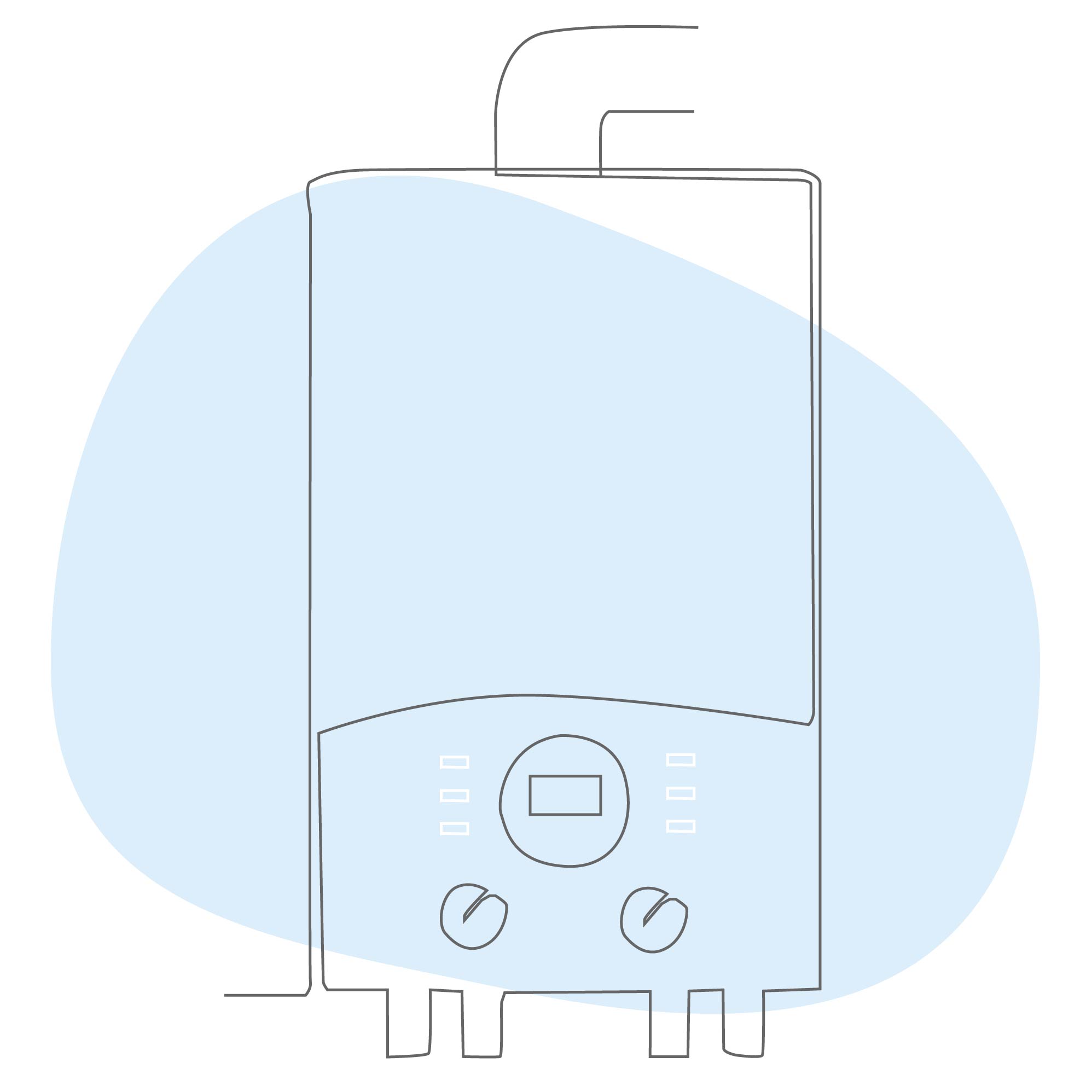 What is boiler flow temperature? Heating experts urge you to check yours now as you could be overpaying on your energy bills
What is boiler flow temperature? Heating experts urge you to check yours now as you could be overpaying on your energy billsTurning this little-known number down just a few degrees can result in some serious savings
By Lauren Bradbury
-
 Stacey Solomon has shared 5 nifty wardrobe storage hacks to make getting ready in the morning easier — and they're genius
Stacey Solomon has shared 5 nifty wardrobe storage hacks to make getting ready in the morning easier — and they're geniusThese five wardrobe storage hacks are a gamechanger
By Katie Sims
-
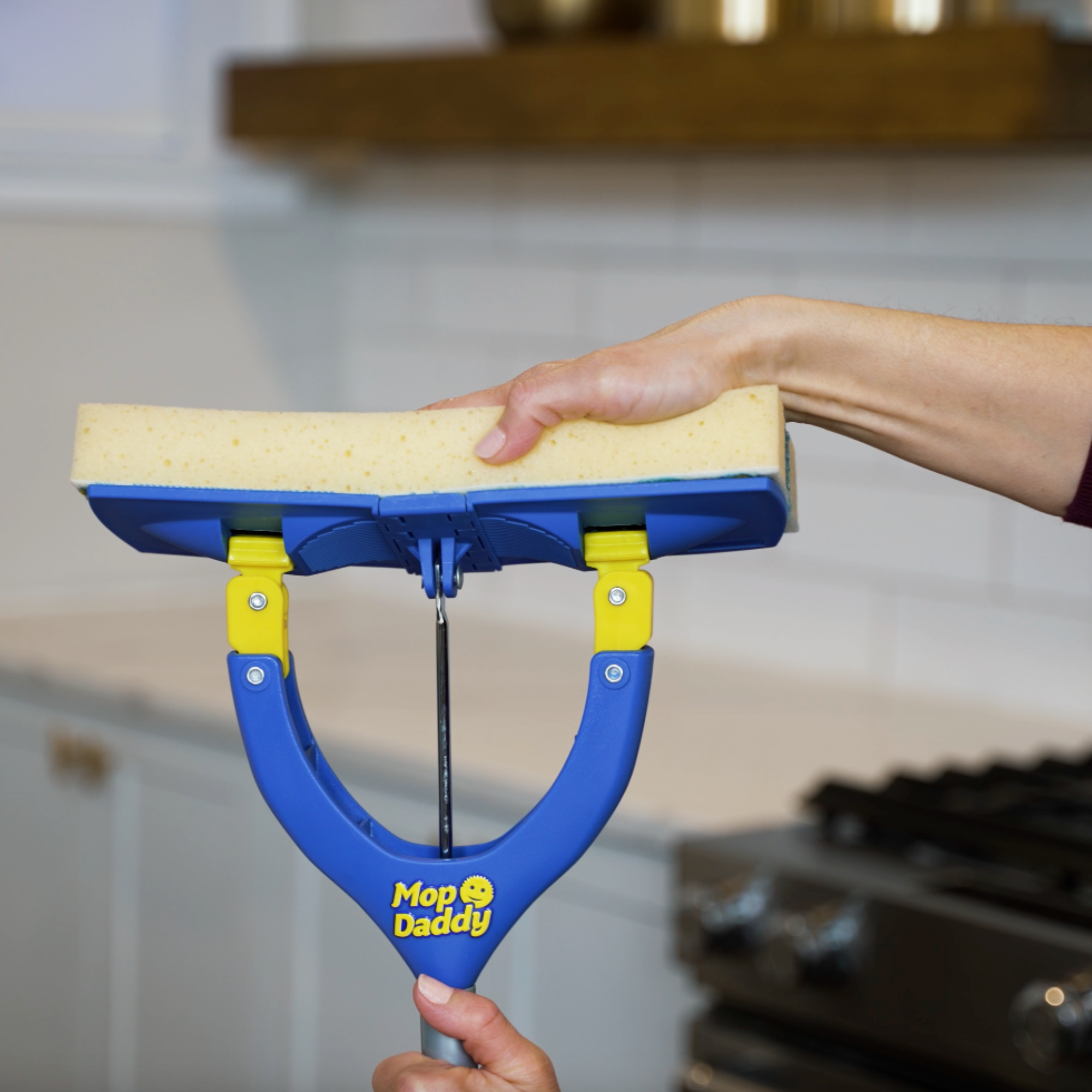 Cult cleaning brand Scrub Daddy has just launched a brand new butterfly mop — could it be the ultimate solution for banishing stubborn marks on your floor?
Cult cleaning brand Scrub Daddy has just launched a brand new butterfly mop — could it be the ultimate solution for banishing stubborn marks on your floor?We're obsessed with all things Scrub Daddy
By Kezia Reynolds
